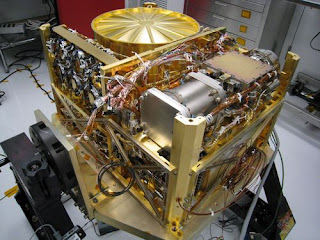 |
| Sample Analysis at Mars for Curiosity |
This would suggest that NASA is prepared to report the presence of organic compounds in the samples scooped up from "a patch of dusty sand called Rocknest." The implication here being that active biological processes may be at work in what is an arbitrary and, from all appearances, not particularly hospitable piece of Martian real estate.
 |
| Five Bites Into Mars at Rocknest |
So the question for me is why has Greg Webster, a Jet Propulsion Laboratory spokesman - although it appears he has been dispatched from NASA's Department of Expectation Reduction - said that the findings would be "interesting" rather than "earthshaking"? My guess is two-fold.
Having been already burned by the early indication of the detection of methane, which turned out to likely be a stowaway gas brought along from Cape Canaveral, NASA wants to hedge its bets. Although the sample gathering apparatus aboard Curiosity had been deliberately purged of Earthly contaminants by an initial dry run using Martian soil, it's sort of remarkable that a first sample should yield such dramatic results.
The startling possibility here is that not only is life present on Mars, but that it is pretty much everywhere. A theme from the song "New York, New York" comes to mind: if you can make it there, you can make it anywhere. That's life.
 |
| Carl Sagan with Viking model |
Fittingly, it was Carl Sagan, a prime mover behind Viking, who reminded us that extraordinary claims require extraordinary evidence. But he left us on our own to figure out what exactly qualifies as extraordinary evidence.
Guessing about Curiosity's Discovery - Viking Redeemed by Marc Merlin is licensed under a Creative Commons Attribution-NoDerivs 3.0 Unported License.
Based on a work at http://thoughtsarise.blogspot.com/2012/11/guessing-about-curiositys-discovery.html.
1 comment:
Psssssssst.
Just between you and me,
I have inside information:
They found a,,,,, TWINKIE!!
Just kididng,
What they actually found was a live cockroach.
They survive ANYWHERE.
And they'll be around long long after we're gone.
Post a Comment